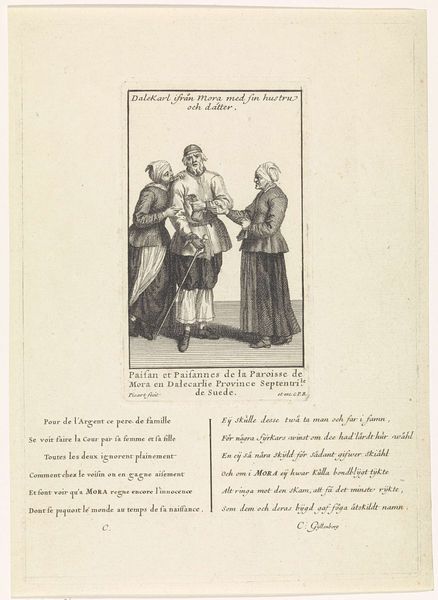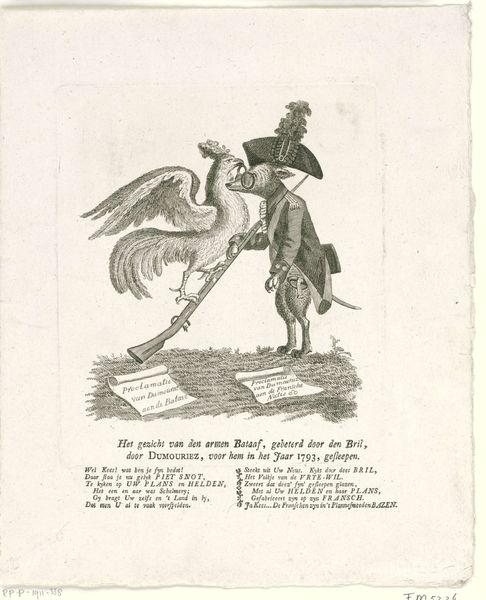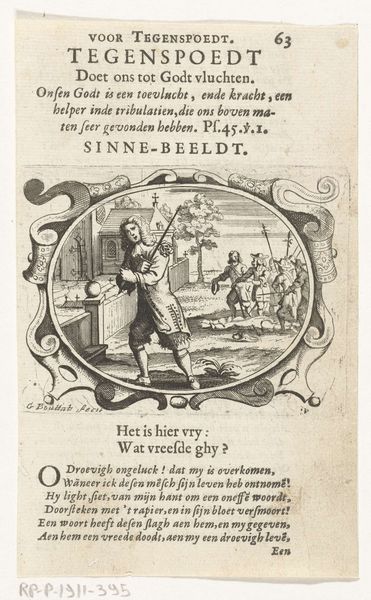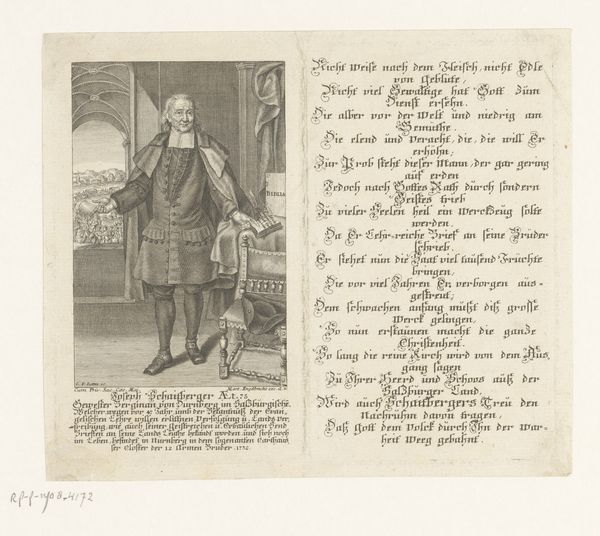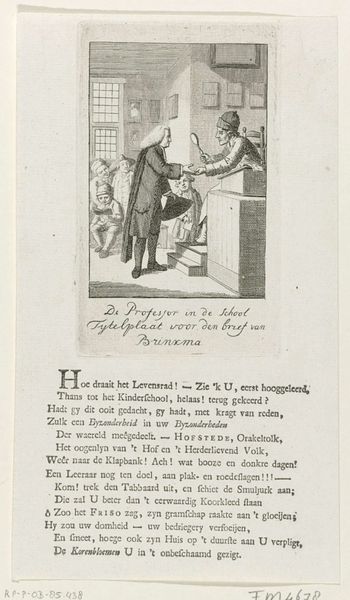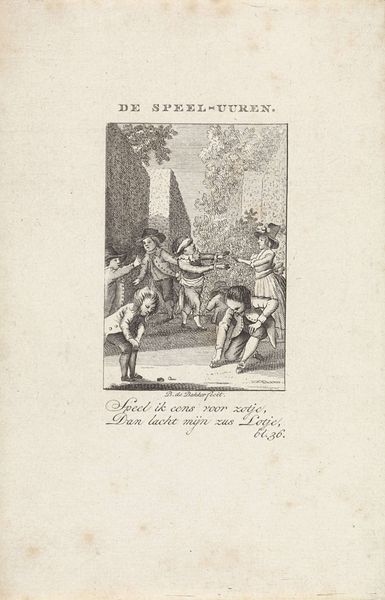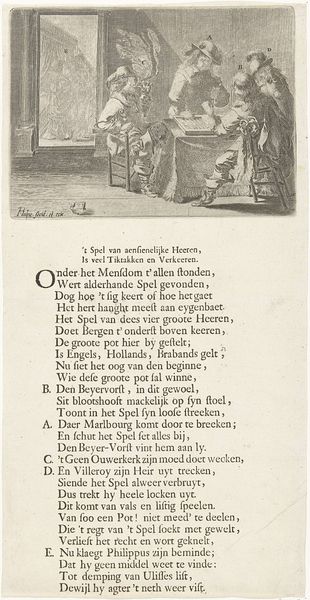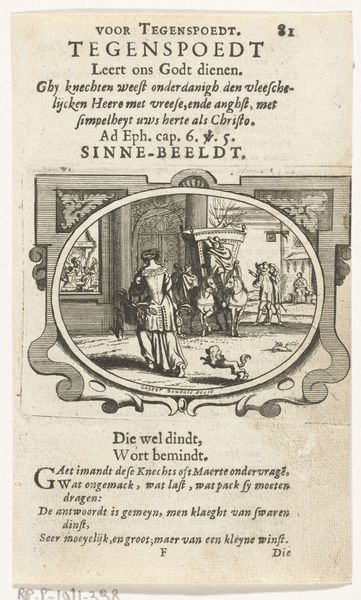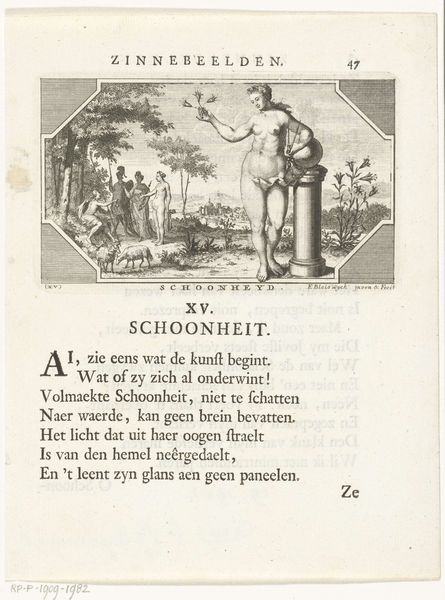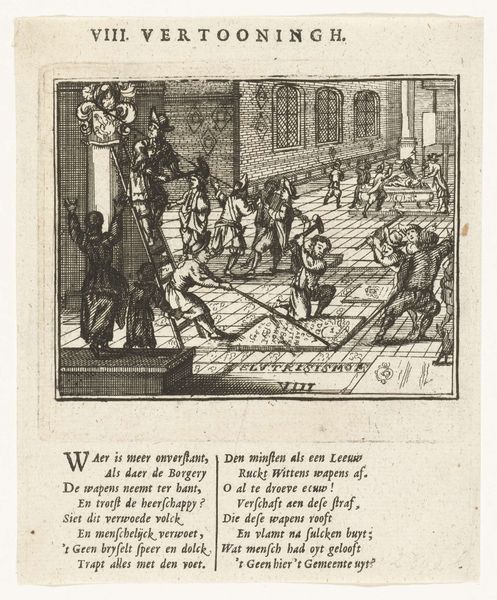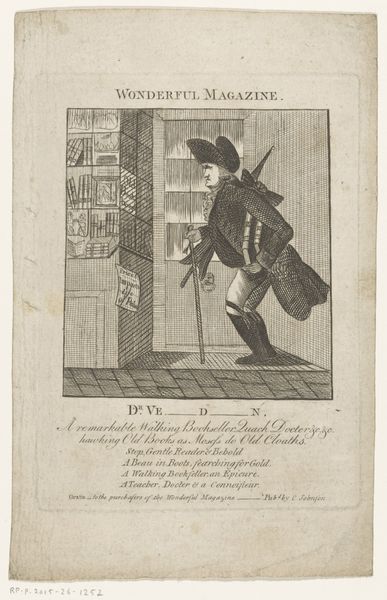
print, engraving
#
portrait
#
neoclacissism
# print
#
old engraving style
#
history-painting
#
engraving
Dimensions: height 270 mm, width 160 mm
Copyright: Rijks Museum: Open Domain
Editor: So, here we have this print called "Spotprent op de patriotse predikant Johan Jacob le Sage ten Broek, 1785," from Anonymous. It's an engraving and looks like it was created in the style of Neoclassicism. I’m struck by how it seems to be making a political point using humor. What's your take on it? Curator: Given the material – an engraving made for mass consumption – the mode of production itself is a commentary. This wasn’t intended for a wealthy patron's private collection. It's a broadside meant to circulate within a community, stoking popular sentiment. The lines and form speak less about high art than the dissemination of ideology. Editor: So, the value lies more in the method of spreading the image rather than any specific artistic style? Curator: Exactly. Think about the labor involved. An engraver, likely working in multiples, is replicating this image for a specific purpose: to shape public opinion regarding this patriot predikant. The material, ink on paper, becomes a weapon of social commentary. The stark black and white emphasizes this. It doesn’t need colour; it needs to be easily reproduced and widely seen. Editor: I see. So, the very act of making it as a print shows how they were trying to impact what people thought at the time? It becomes almost a form of propaganda due to its mass producibility. Curator: Precisely! And consider the skill of the engraver – a craftsman translating political opinion into a visual, reproducible form. It questions the usual hierarchy separating artist and artisan. Both are contributing to the narrative here, interwoven into this political moment. What appears to be an artistic product becomes an artifact of political labor. Editor: I never thought about prints in that light. I always considered their aesthetic value, but viewing them in terms of production and labor shifts my understanding. Thanks for sharing that perspective. Curator: It's a lens through which we can reveal layers of meaning. Recognizing the material and production enables us to unpack the intentions behind art.
Comments
No comments
Be the first to comment and join the conversation on the ultimate creative platform.
